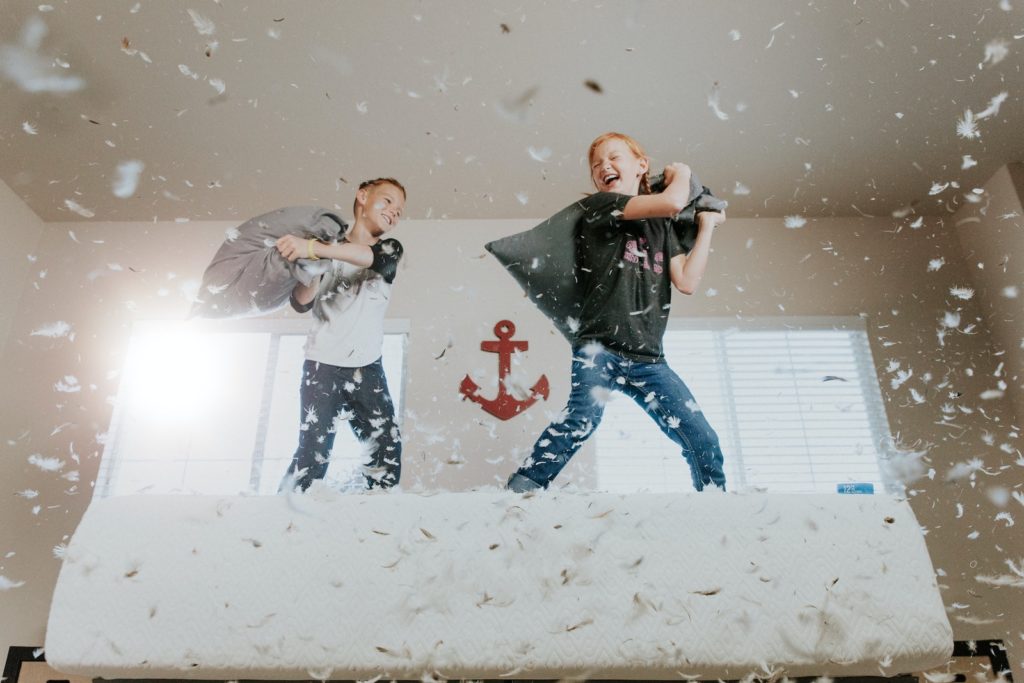As parents, we want to raise our children to be responsible, caring, and accountable members of society. One way to achieve this is by teaching them the importance of taking responsibility for their actions and the consequences that follow.
As Haim Ginott, an Israeli child psychologist and autor, once said:
“Children are like wet cement, whatever falls on them makes an impression.”
This quote highlights the importance of being mindful of the messages we send to children and the impact our words and actions have on their development. It underscores the need for responsible and thoughtful education that helps children learn to take responsibility for their actions and become responsible adults.
Teaching our children to take responsibility is not an easy task. It requires patience, persistence, and consistency. But the benefits of this life skill are immeasurable. By teaching our children to take responsibility, we are instilling in them a sense of ownership and accountability that will serve them well throughout their lives.
Lead by example
The first step in teaching our children to take responsibility is to model it ourselves. We need to show our children that we take responsibility for our actions and the consequences that follow. When we make mistakes, we need to own up to them and make amends. By doing so, we teach our children that it is okay to make mistakes as long as we take responsibility for them.
Encouragement
Next, we need to encourage our children to take responsibility for their actions. This means teaching them to be honest about their mistakes and to take steps to make things right. For example, if your child breaks something, they should take responsibility for it by apologizing and helping to clean up the mess. If your child forgets to do their homework, they should take responsibility by talking to their teacher and figuring out a plan to catch up.
Consequences
Taking responsibility also means accepting the consequences that come with our actions. When our children make mistakes, they need to understand that there will be consequences, and they need to be prepared to face them. For example, if your child forgets to do their homework, they may need to stay after school to complete it or receive a lower grade. If your child breaks a rule, they may need to face a consequence such as losing privileges or having a discussion with a teacher or parent.
Build healthy, positive relationships
Teaching our children to take responsibility may be challenging, but it is essential for their growth and development. By learning to take responsibility for their actions, our children will become more confident, responsible, and empathetic individuals. They will be better equipped to navigate the challenges of life and to build healthy, positive relationships with others.
So how does that look in real life ?

Do you ever feel like you’re constantly playing a game of “Who Did It?” with your kids? You know, when you come home to find your favorite vase shattered into a million pieces and your kids are both looking at each other like they have no idea what happened? Yeah, been there, done that.
But as frustrating as it can be, it’s important to teach our kids to take responsibility for their actions. Not just for the sake of our sanity (although that’s a big part of it), but also because it sets them up for success in the future.
One of my favorite ways to teach my kids about responsibility is to turn it into a game. We call it “The Consequence Game,” and it goes a little something like this:
First, we start with a hypothetical scenario.
Let’s say one of my kids forgot to do their homework. We talk about what the consequence for that action might be (lower grade, having to stay in during recess to catch up, etc.).
Then, I let my kids come up with their own consequences.
This is where things get really interesting. My son once suggested that if he forgot to do his homework, he should have to eat broccoli for breakfast every day for a week. Hey, I didn’t say the consequences had to be realistic!
Of course, when it comes to real-life situations, the consequences have to be a bit more practical. But the point is to get our kids thinking about cause and effect, and to help them understand that their actions have consequences.
Another way to teach responsibility is to lead by example. This can be as simple as admitting when we’ve made a mistake, or showing our kids how to clean up a mess they’ve made. For example, when my son spilled milk all over the kitchen table, I didn’t yell or get upset. Instead, I showed him how to grab a rag and clean it up.
Teaching responsibility isn’t always easy, but it’s so worth it in the end. Plus, it makes for some pretty funny stories along the way. Like the time my son blamed the dog for eating his math homework. Sorry buddy, but I’m pretty sure the dog doesn’t know algebra.
So let’s keep on teaching our kids about responsibility, one broccoli breakfast at a time. Because if we don’t, who knows what kind of chaos they’ll cause next!
We must continue to model and teach responsibility to our children, so they can become the best versions of themselves. As always, parenting is a journey, and we are in this together.
Until next time,
Freedom Dad

